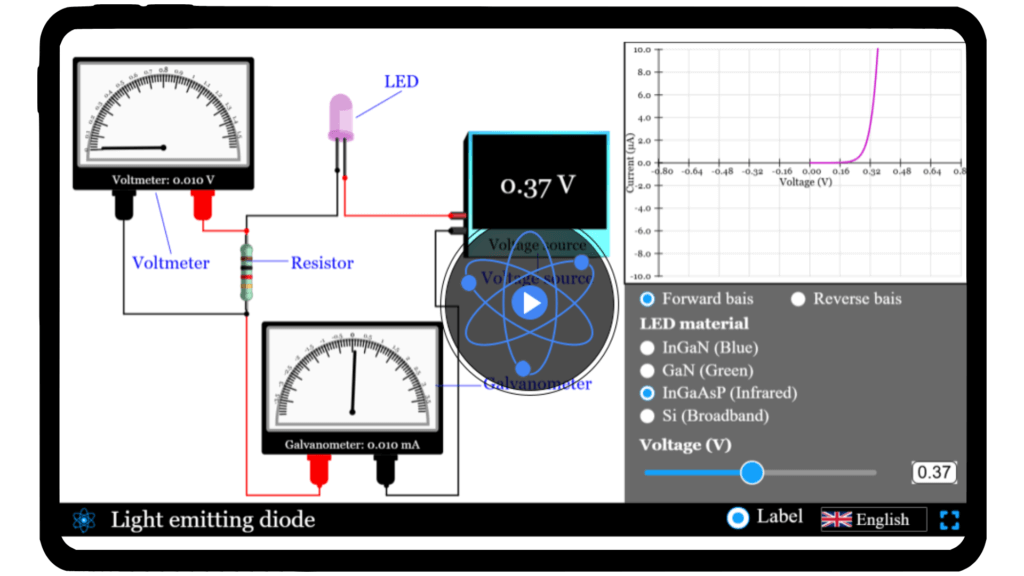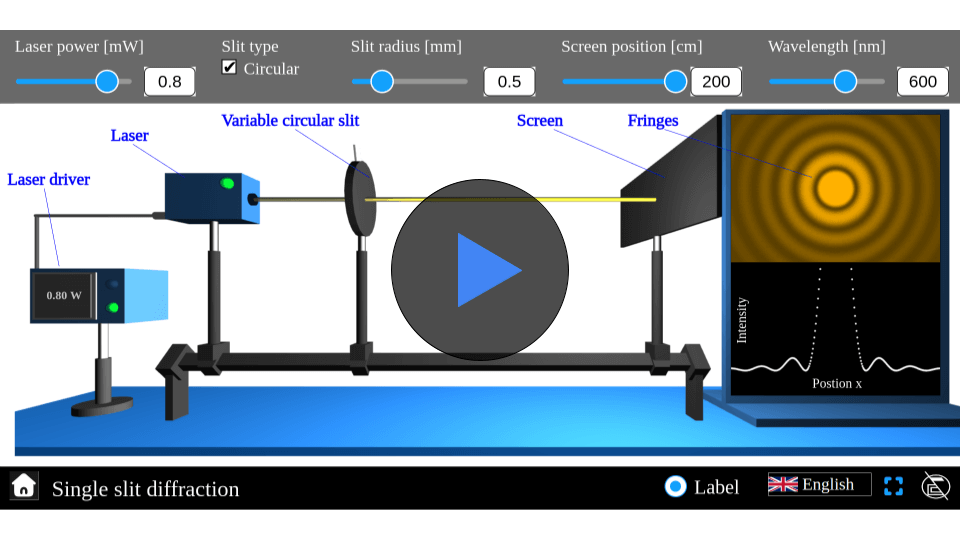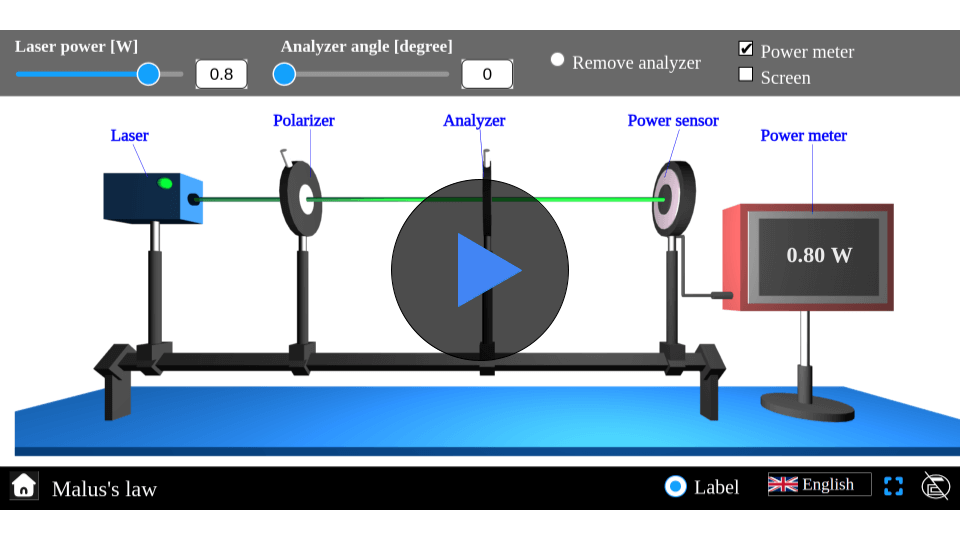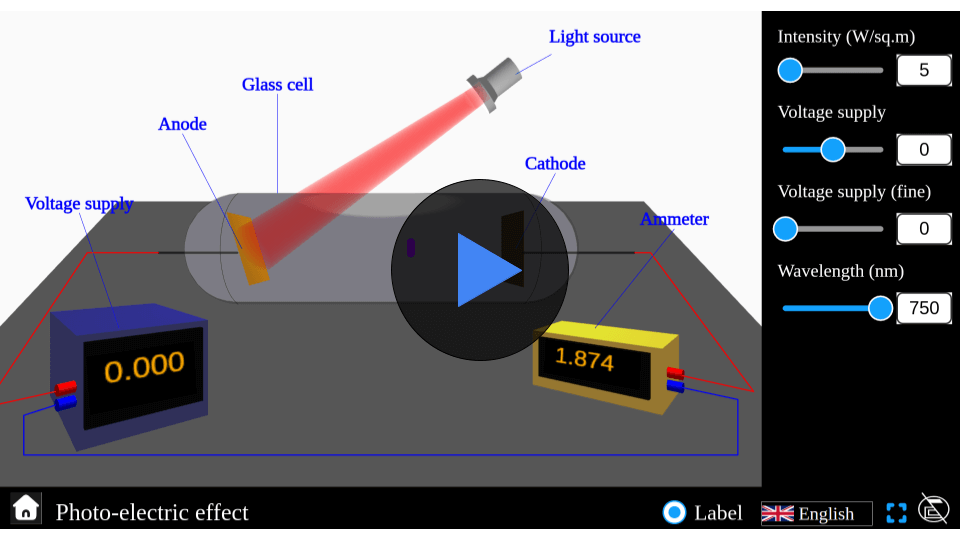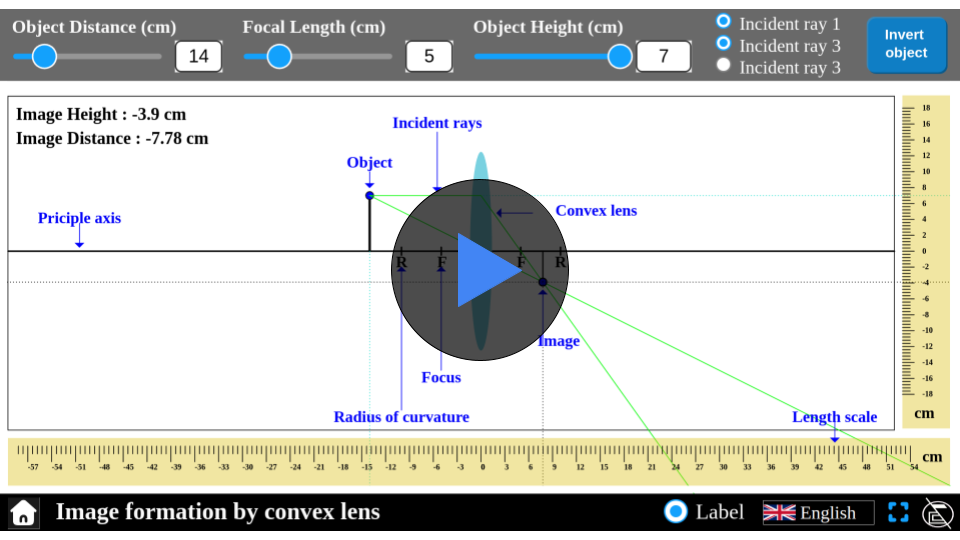Light Emitting Diode Simulator
Investigate the behavior of LEDs and experiment with varying voltages and bias conditions to observe their I-V characteristics using our interactive simulator.
Light Emitting Diode (LED)
Physics powers the devices all around us, often in ways we take for granted. Have you ever wondered how a tiny LED lights up when voltage is applied, and how its brightness and current change with different conditions? These fascinating behaviors arise from the principles of semiconductor physics and electron flow. With our interactive LED simulator, you can explore this phenomenon firsthand. Adjust voltages, switch between forward and reverse bias, select different LED types, and watch how current and illumination respond. Start your journey into the world of electronics — experiment with LEDs today!
\( I = I_s \left( e^{\frac{V}{n V_T}} – 1 \right) \)
Mathematical description
where:
- \( I \) is the diode current
- \( I_s \) is the saturation current
- \( V \) is the voltage across the diode
- \( n \) is the ideality factor
- \( V_T \) thermal voltage (~26 mV at room temperature)
FAQs on LED
Qus 1. What is an LED?
An LED (Light Emitting Diode) is a semiconductor device that emits light when an electric current passes through it. It is highly energy-efficient, long-lasting, and widely used in lighting, displays, and electronic devices.
Qus 2. How does an LED work?
LEDs work on the principle of electroluminescence. When current flows through the semiconductor, electrons recombine with holes and release energy in the form of visible light.
Qus 3. What are the forward and reverse bias conditions of an LED?
In forward bias, current flows through the LED and it emits light. In reverse bias, the LED does not conduct, and no light is produced—excess reverse voltage can even damage it.
Qus 4. Why does an LED have a specific voltage rating?
Each LED has a threshold voltage; below this, it won’t emit light.
Most LEDs operate at a forward voltage of 1.8V to 3.5V and a current of 10–30 mA, depending on the color and design. Exceeding these ratings can damage the LED.
Qus 5. What factors affect LED brightness?
Qus 6. Can LEDs change color?
Yes. The color of an LED depends on the band gap of the semiconductor material used. Different band gaps release photons of different energies, producing colors like red, green, blue, or white.
Qus 7. What is the difference between LED and a normal diode?
A normal diode allows current flow in one direction but does not emit light. An LED is a special diode designed to emit visible light when forward biased.
Qus 8. Why are LEDs used instead of filament bulbs?
LEDs are more efficient, durable, and eco-friendly. They convert most of the electrical energy into light, unlike filament bulbs that waste energy as heat.
